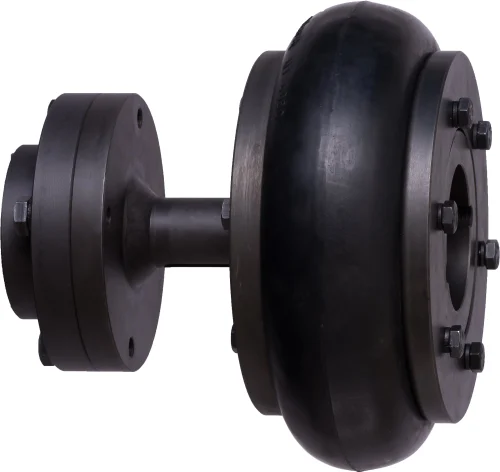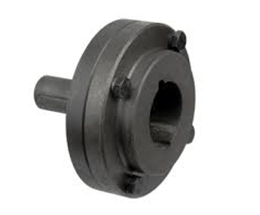Product Description
CE ISO RM Spacer Coupling with Tyre Coupling
RM spacer coupling,
1. The coupling provied a convenient method of rigidly connecting ends of shafts and fit with taper bush.
2. They have a male and female flange, the male flange can have the bush fitted from the hub side H or from
the Flange side F, the female flange always has the bush fitting F. When connecting vertica shafts use
3. End of 1 flange has a spacer part, it can be connected with tyre coupling.
4. Customzied requirement is available
| Material: | Stainless Steel |
|---|---|
| Type: | Circular Gear |
| Company Name: | Shanghai Shine Transmission Machinery Co., Ltd. |
| Brand: | Sypt |
| Products Material: | Steel RM Spacer Coupling with Tyre Coupling |
| MOQ: | One PCS for RM Spacer Coupling with Tyre Coupling |
| Customization: |
Available
| Customized Request |
|---|



Can Spacer Couplings Handle Misalignment Between Shafts?
Spacer couplings are designed to handle some degree of misalignment between shafts, but their capacity to do so depends on the specific coupling design and the magnitude of the misalignment.
Unlike flexible couplings, which can accommodate significant misalignment through their elastic properties, spacer couplings are generally less forgiving when it comes to misalignment. However, they can tolerate limited angular, parallel, and axial misalignment.
The amount of allowable misalignment for a spacer coupling depends on factors such as:
- Coupling Design: Some spacer couplings, such as the sleeve or muff coupling, have relatively more flexibility and can handle more misalignment than others.
- Coupling Size: Larger spacer couplings may have a higher misalignment capacity than smaller ones.
- Material: Certain materials used in manufacturing spacer couplings may provide some level of flexibility to accommodate misalignment.
- Application Requirements: The specific needs of the application, including the type of connected equipment and the expected operating conditions, will influence the acceptable misalignment range.
It is essential to consider the manufacturer’s specifications and recommendations when using spacer couplings to ensure that the misalignment falls within the permissible limits. Excessive misalignment can lead to premature wear, increased vibration, and reduced coupling life. Therefore, precise alignment during installation is critical for optimal performance and longevity of the spacer coupling and the connected machinery.

Can Spacer Couplings be Used in Applications with Varying Operating Temperatures?
Yes, spacer couplings can be used in applications with varying operating temperatures. The suitability of a spacer coupling for a specific temperature range depends on the materials used in its construction.
Many spacer couplings are designed to withstand a wide range of temperatures, making them versatile for use in diverse industrial environments. Some key considerations regarding temperature and spacer couplings include:
1. Material Selection: The choice of materials plays a crucial role in determining the temperature range that a spacer coupling can handle. Common materials used for spacer couplings include steel, stainless steel, aluminum, and various alloys. Each material has its own temperature limits, and it is essential to select a coupling made from materials that can withstand the anticipated temperature conditions in the application.
2. High-Temperature Applications: For high-temperature applications, spacer couplings made from materials with excellent heat resistance are suitable. Stainless steel and high-temperature alloys are often used in such cases. These materials can withstand elevated temperatures without losing their mechanical properties, ensuring reliable performance under extreme conditions.
3. Low-Temperature Applications: In low-temperature environments, certain materials may become brittle and lose their toughness. Spacer couplings intended for use in cold environments should be made from materials that remain ductile and reliable at low temperatures. Special low-temperature steels or alloys are commonly used for these applications.
4. Thermal Expansion: Spacer couplings should also account for the thermal expansion that occurs in machinery as it operates at varying temperatures. Different materials have different coefficients of thermal expansion, and the design of the coupling must consider these factors to prevent issues related to differential thermal expansion between connected components.
5. Insulation: In some applications, particularly in industries where electrical insulation is critical, spacer couplings with insulating properties may be necessary to prevent electrical conduction between connected shafts. Insulating spacer couplings are commonly used in electric motor drives and other electrical systems to enhance safety and prevent electrical interference.
When selecting a spacer coupling for an application with varying operating temperatures, it is essential to consider the specific temperature requirements of the system, the materials used in the coupling’s construction, and any additional factors related to thermal expansion and insulation. Consulting with coupling manufacturers or experts can help ensure the correct coupling is chosen for the specific temperature conditions in which it will operate.


editor by CX 2023-12-14